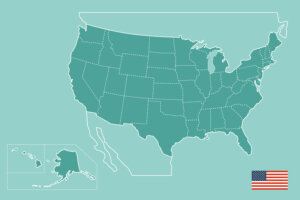Various methods of market research are used to find out information about markets, target markets and their needs, competitors, market trends, customer satisfaction with products and services, etc.
Businesses can learn a great deal about customers, their needs, how to meet those needs and how the business is doing to meet those needs. Businesses need not to be experts at methods of research either.
Sections of This Topic Include
- Critical Role of Market Research
- Basic Methods to Get Information and Feedback from Customers
- Some Major Sources of Market Research Information
- Additional Perspectives on Conducting Market Research
- Sources of Market Research Information
Also consider
Learn More in the Library’s Blogs Related to Market Research
In addition to the articles on this current page, also see the following blogs that have posts related to Market and Research. Scan down the blog’s page to see various posts. Also see the section “Recent Blog Posts” in the sidebar of the blog or click on “next” near the bottom of a post in the blog. The blog also links to numerous free related resources.
Critical Role of Market Research
© Copyright Carter McNamara, MBA, PhD
It is extremely difficult to develop and provide a high-quality product or service without conducting at least some basic market research. Some people have a strong aversion to the word “research” because they believe that the word implies a highly sophisticated set of techniques that only highly trained people can use. Some people also believe that, too often, research generates lots of useless data that is in lots of written reports that rarely are ever read, much less used in the real world. This is a major misunderstanding.
Odds are that you have already conducted at least some basic forms of market research. For example, you have listened (a research technique) to others complain about not having enough of something — that should suggest providing what they need in the form of a product or service.
Market research has a variety of purposes and a variety of data collection methods might be used for each purpose. The particular data collection method that you use during your market research depends very much on the particular
information that you are seeking to understand.
Uses for Market Research
The following paragraphs mention some of the primary uses for market research. Useful data collection methods are associated with most of the items in the following list.
1. Identify opportunities to serve various groups of customers.
Verify and understand the unmet needs of a certain group (or market) of customers. What do they say that they want? What do they say that they need? Some useful data collection methods might be, for example, conducting focus groups, interviewing customers and investors, reading the newspaper and other key library publications, and listening to what clients say and observing what they do. Later on, you might even develop a preliminary version of your product that you pilot, or test market, to verify if the product would sell or not.
2. Examine the size of the market – how many people have the unmet need.
Identify various subgroups, or market segments, in that overall market along with each of their unique features and preferences. Useful data collection methods might be, for example, reading about demographic and societal trends in publications at the library. You might even observe each group for a while to notice what they do, where they go and what they discuss. Consider interviewing some members of each group. Finally, consider conducting a focus group or two among each group.
3. Determine the best methods to meet the unmet needs of the target markets.
How can you develop a product with the features and benefits to meet that unmet need? How can you ensure that you have the capacity to continue to meet the demand? Here’s where focus groups can really come in handy. Conduct some focus groups, including asking them about their preferences, unmet needs and how those needs might be met. Run your ideas past them. At the same time, ask them what they would need to use your services and what they would pay for them.
4. Investigate the competition.
Examine their products, services, marketing techniques, pricing, location, etc. One of the best ways to understand your competitors is to use their services. Go to their location, look around and look at some of their literature. Notice their ads in newsletters and the newspaper. Look at their web sites.
5. Clarify your unique value proposition.
Your proposition describes why others should use your organization and not the competition’s. A particularly useful data collection method in this area is the use of focus groups. Get some groups of potential clients together and tell them about your ideas. Tell them how your ideas are unique. Tell them how you would want your program to be seen (its positioning). Ask them what they think.
6. Conclude if the product is effectively meeting the needs of the customers.
One of the best ways to make this conclusion is to conduct an evaluation. An evaluation often includes the use of various data collection methods, usually several of them, for example, observing clients, interviewing them, administrating questionnaires with them, developing some case studies, and, ideally, conducting a product field test, or pilot.
7. Conclude if your advertising and promotions strategies are effective or not.
One of the best ways to make this conclusion is to evaluate the results of the advertising. This could include use of several data collection methods among your clients, such as observing clients, interviewing them, administrating questionnaires with them, developing some case studies.
To plan your market research, see Business Research.
Basic Methods to Get Information and Feedback from Customers
© Copyright Carter McNamara, MBA, PhD
Far too often, we think we know what our customers think and want because — well, we just know, that’s all. Wrong! Businesses can’t be successful if they don’t continue to meet the needs of their customers. Period. There should be
few activities as important as finding out what your customers want for products and services and finding out what they think of yours. Fortunately, there are a variety of practical methods that businesses can use to feedback from customers.
The methods you choose and how you use them depend on what the type of feedback that you want from customers, for example, to find out their needs in products and services, what they think about your products and services, etc.
Employees
Your employees are usually the people who interact the most with your customers. Ask them about products and services that customers are asking for. Ask employees about what the customers complain about.
Comment Cards
Provide brief, half-page comment cards on which they can answer basic questions such as: Were you satisfied with our services? How could we provide the perfect services? Are there any services you’d like to see that don’t exist yet?
Competition
What is your competition selling? Ask people who shop there. Many people don’t notice sales or major items in stores. mStart coaching those around you to notice what’s going on with your competition. (See Competitive
Analysis.)
Customers
One of the best ways to find out what customers want is to ask them. Talk to them when they visit your facility or you visit theirs. (See Questioning and Listening.)
Documentation and Records
Notice what customers are buying and not buying from you. If you already know what customers are buying, etc., then is this written down somewhere? It should be so that you don’t forget, particularly during times of stress or when trying to train personnel to help you out.
Focus Groups
Focus groups are usually 8-10 people that you gather to get their impressions of a product or service or an idea. (See Focus Groups.)
Surveys by Mail
You might hate answering these things, but plenty of people don’t — and will fill our surveys especially if they get something in return. Promise them a discount if they return the completed form to your facility. (See Survey Design.)
Telephone Surveys
Hire summer students or part-time people for a few days every six months to do telephone surveys. (See Survey Design.)
Some Major Sources of Market Research Information
© Copyright Carter McNamara, MBA, PhD
Census Bureau
There is a vast amount of information available to you, and much of this is online.
Chamber of Commerce
Get to know the people in your local office. Offices usually have a wealth of information about localities, sources of networking, community resources to help your business, etc.
Department of Commerce
The Department has offices in various regions across the country and publishes a wide range of information about industries, products and services.
Ask Librarians
They love to help people. See the Directory of Associations, Sales and Marketing Management magazine, American Statistics Index (ASI), Encyclopedia Of Business Information Book, Standard & Poor’s Industry Survey’s and Consumer’s Index.
Trade and Professional Organizations
Organizations often produce highly useful newsletters for members, along with services for networking, answering questions, etc.
Trade and Professional Publications
These have become much more useful as various trades become more specialized and their expectations are increasing for timely and useful information
Additional Perspectives on Conducting Market Research
- Basic Methods to Get Feedback From Customers
- How to Do Market Research
- The Social Graph
- Conducting Market Research
- What DOES your Target Market Want?
- Strategically Assessing Your Market’s Appetite for Innovation
Once you’ve designed your research needs, the following research
resources may be helpful
- Appreciative Inquiry
- Case Study Design
- Focus Groups
- Interview Design
- Listening
- Questioning (face to face)
- Questionnaire Design
- Survey Design
Sources of Market Research Information
(Credit to the publication “A Guide to Starting a Business in Minnesota” for much of the following information.)
Census Data
General Market Research Information
- Market Research Portal
- The 10 Best Sites for Market Research
- Marketresearch.com
- Market, Industry and Business Plans (1 of 3)
- Market, Industry and Business Plans (2 of 3)
Market, Industry and Business Plans (3 of 3)
Various Databases for Business Information
- ProQuest ABI/INFORM Collection – trade journals, industry surveys and company reports
- Business Resource Database – business journals, industry surveys, market research and country reports
- IBISWord – U.S. Industry Market Research and Industry Risk Ratings
- NewsBank – Business journals and domestic and international newspapers
Tools for Research Companies
- Dun & Bradstreet – Global commercial database contains more than 265 million business records
- Hoover – Information on about 40,000 companies
- Kompass – Information about 2.3 million companies in 66 countries
- Mergent Online – Information about public companies around the world
- Manufacturer’s News Inc – Nation’s largest compiler and publisher of industrial directories and databases
- ReferenceUSA – http://resource.referenceusa.com/
For the Category of Marketing:
To round out your knowledge of this Library topic, you may want to review some related topics, available from the link below. Each of the related topics includes free, online resources.
Also, scan the Recommended Books listed below. They have been selected for their relevance and highly practical nature.
 Sections of this topic
Sections of this topic















